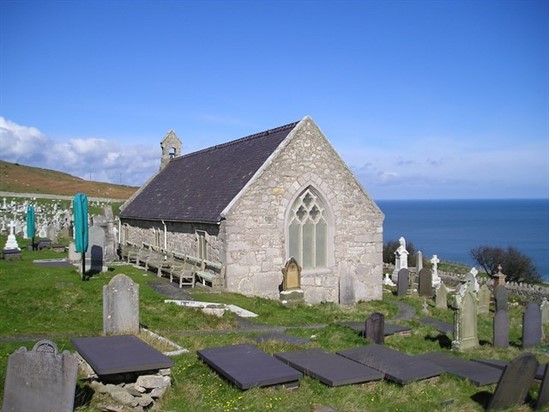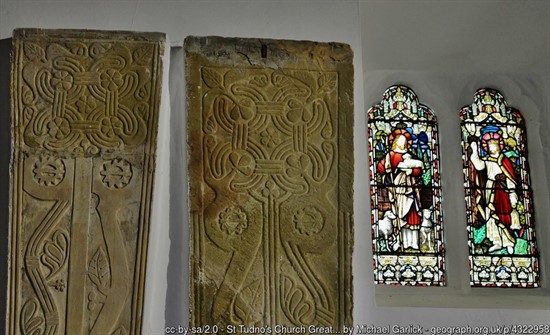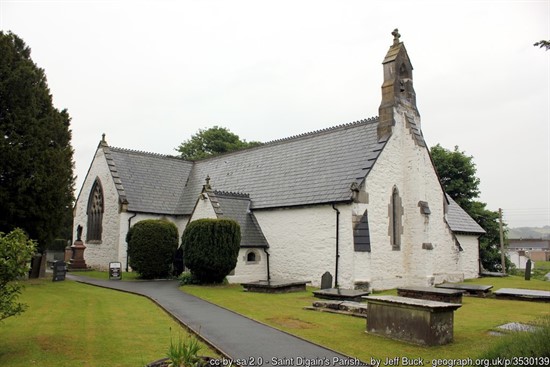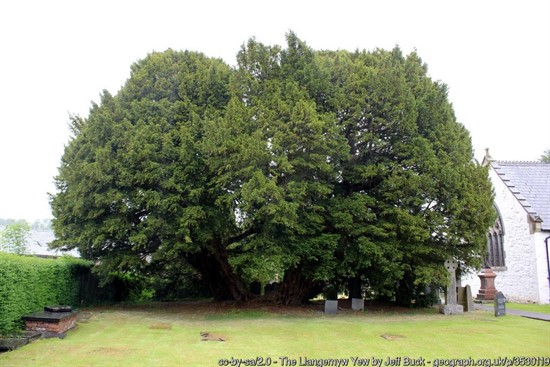Posted on 28/02/2018 by David
North Wales is home to some of the most wonderful churches, holy sites and places of worship. From imposing cathedrals to tiny stone chapels in the country, they all have a rich history and a fascinating story behind them.
In this blog mini-series, we explore some of our favourite churches. Why not take time to visit these beautiful and sacred places on your next trip to North Wales, and learn about their rich and compelling histories?
St Tudno's, Llandudno - the church on the rock

This quaint little church is at its best during the summer, during one of its popular outdoor services, when the lively sea breeze is tempered by the warmth of the sun. It can get a bit breezy up on the Great Orme, even on the calmest of days, but it's a tranquil spot perfect for some quiet reflection, and is a great culture cache on a jaunt around this enormous limestone outcrop.
Tudno is Llandudno's patron saint. He was a Celtic missionary who founded a cell on the Orme sometime during the reign of Maelgwyn Gwynedd (490-549CE), having studied at St Dunawd's college in the monastery of Bangor Iscoed (modern day Bangor-on-Dee in Wrexham County).
Tudno is said to have been one of King Seithenyn's seven sons, whose legendary kingdom in Cardigan Bay (Cantref y Gwaelod) was submerged by a devastating tidal wave.
Tudno may have at first inhabited a cave on the Orme, later establishing an enclosure (a llan) that a small community developed around. This community was the early beginnings of the Llandudno we know today and Tudno brought the faith of Christ to the local people.
Unfortunately, none of the original structure of Tudno's church has survived. It was lovingly built and rebuilt over many centuries, taking on its final form in the 15th century.
In 1839, a gale blew the roof blew off. Rather than restoring the building again, church officials opted to build a brand new church on the lower slopes of the Orme on Church Walks - the now deconsecrated St George's Church - as it was closer to the centre of the growing town.
In 1855, the original St Tudno's benefited from a restoration grant of the princely sum of £100 that allowed the roof to be repaired and services recommence.
Medieval wall paintings that had survived the centuries were sadly lost during the 19th century, but the church has a few ancient features within, such as a 12th century font and 14th century stone coffin lids.

However, the wooden roof boss is the church's most spectacular treasure. Carved high above the chancel step, it depicts the Stigmata, or the Five Wounds of Christ. This emblem is almost totally unique in Wales, with the only other surviving boss to be found - coincidentally - nearby at St Hilary's Church in the parish of Llanrhos.
In addition, the earliest surviving stone window in the church is, unusually, set in the north wall of the church. It is believed that it was used as a sort of rudimentary lighthouse - helping sailors navigate the rocky waters of the Orme at night.
St Digain's Church, Llangernyw - the church with the Yew

Llangernyw is a quintessentially Welsh country village a few miles outside Abergele. The church here was founded by Digain, a 5th century saint. The name Llangernyw derives from the Welsh, meaning 'church of the Cornishmen' after Digain's father, King Cystennin of Cornwall (himself also a saint).
Like St Tudno's, none of the original structure of St Digain's survives but its shape conforms to the ancient design of Welsh churches (non-cross). The oldest part of the building, the nave, is thought to date from the late 14th century.
The grounds themselves are also believed to have been considered sacred long before a church ever stood here. You can see several standing stones, one of which bears a chiseled cross believed to have been carved between the 7th-9th century.
More intriguing still is the famous Yew tree that stands in the church grounds. The British Tree Council estimate it to be over 4,000 years old - quite possibly the oldest living thing in the UK. In 2002, it was designated one of 50 Great British Trees to celebrate the Queen’s Golden Jubilee.
Before the Yew's significance was realised, the church's oil tank used to be stored in its trunk! Historians believe the Yew could have been the focus of pre-Christian rituals, supported by the existence of a pagan tomb and guard stones that can be seen in the churchyard.
Folklore claims the tree is home to the Angelystor, a spirit that foretells the future, albeit a grim one. Annually, on All Hallows Eve and 31 July, the spirit is said to appear and recite the names of parishioners soon to die.
Until the early 18th century, markets were regularly held within the church grounds. This was common practice in village churches but was put to an abrupt stop in Llangernyw when vicar, John Kenrick, witnessed butchers sharpening their knives on the stone of St Digain's font. He declared their actions 'contrary to canon and common decency' and locked the church gate on market day, much to the anger of the locals.
Do you know any sacred or holy places in North Wales with interesting or unexpected stories? We'd love to feature them in future blogs! Do let us know if you visit either of these churches and what you thought of them - you can even share your photos with us on Twitter using @NWHC.
Click here to read part seven in the series.

Images courtesy: St Tudno's medieval coffin lids © Copyright Michael Garlick and licensed for reuse under this Creative Commons Licence. St Tudno's view by Noel Walley, 2004. St Digain's and the Llangernyw Yes Tree by © Copyright Jeff Buck and licensed for reuse under this Creative Commons Licence.

